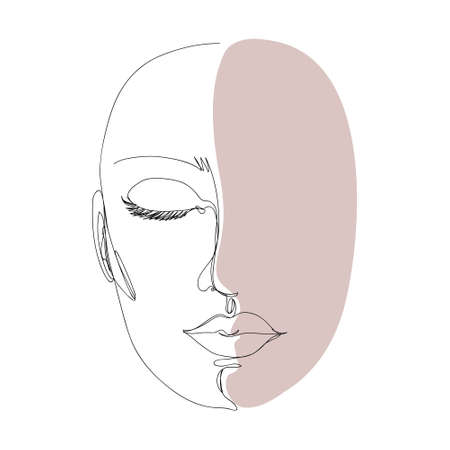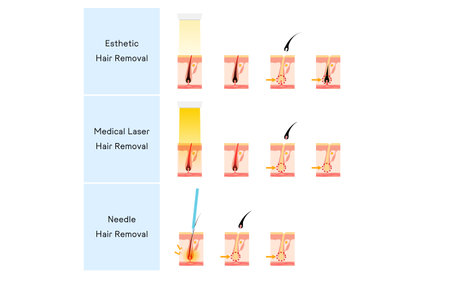1. Understanding the Aging Process: What Changes After 40?
Turning 40 is a milestone that often brings new perspectives on self-care, including how we think about our skin and facial features. In your forties, your face may start to look and feel different than it did in your twenties or thirties. Understanding these changes can help you make informed decisions if you’re considering cosmetic procedures like Botox or fillers.
How Your Skin and Face Change in Your 40s
Our skin naturally loses elasticity and volume as we age, especially after 40. Collagen production slows down, leading to fine lines, wrinkles, and sagging. Sun exposure over the years can also show up more clearly in the form of dark spots or uneven tone. At the same time, fat pads under the skin shift, which can affect the contours of your cheeks and jawline.
Main Changes to Expect After 40
| Area | Common Changes | Why It Happens |
|---|---|---|
| Skin Texture | Fine lines, dryness, rough patches | Reduced collagen & slower cell turnover |
| Facial Volume | Loss of fullness in cheeks & temples | Fat pads shrink and shift downward |
| Jawline & Neck | Sagging skin, jowls appear | Gravity + less skin elasticity |
| Pigmentation | Age spots, uneven skin tone | Cumulative sun damage & hormonal shifts |
| Wrinkles & Expression Lines | Crow’s feet, forehead lines, smile lines deepen | Muscle movement + thinning skin |
Why These Changes Matter for Cosmetic Procedures
The natural shifts in your skin and facial structure mean that cosmetic treatments after 40 are often about restoring what’s been lost rather than dramatically changing how you look. Treatments like Botox can relax expression lines, while fillers can replace lost volume for a refreshed appearance. Knowing what’s happening beneath the surface helps set realistic expectations—and lets you choose options that feel right for your unique face.
2. Botox Basics: What to Expect and Is It Right for You?
How Does Botox Work?
Botox is a brand name for botulinum toxin, a purified protein that temporarily relaxes muscles. When injected into specific facial muscles, it blocks nerve signals that cause those muscles to contract. This helps smooth out wrinkles and fine lines—especially in areas like the forehead, between the eyebrows (the “11s”), and around the eyes (crow’s feet). The effects are not permanent, usually lasting three to four months.
Benefits of Botox After 40
- Reduces visible signs of aging: Softens dynamic wrinkles caused by facial movements
- Minimally invasive: No surgery required, with little to no downtime
- Quick treatment: Most sessions take about 15–30 minutes
- Boosts confidence: Many people feel more refreshed and youthful after treatment
Risks and Side Effects
Botox is generally considered safe when administered by a licensed professional. However, like any cosmetic procedure, there are potential risks and side effects to consider. Here’s a quick look:
| Common Side Effects | Rare Risks |
|---|---|
| Mild bruising or swelling at injection site | Drooping eyelids or eyebrows (temporary) |
| Headache | Allergic reactions |
| Slight discomfort during injection | Muscle weakness near injection area |
The Cost Factor: What to Budget For
The price of Botox varies depending on where you live in the U.S., the experience of your provider, and how many areas you want treated. On average, Americans pay between $300 and $600 per session. Most providers charge either by unit or by treatment area. Since results aren’t permanent, expect repeat visits every few months to maintain your look.
BOTOX COST COMPARISON TABLE (U.S.)
| Region | Average Cost per Session |
|---|---|
| East Coast (NYC, Boston) | $400–$700 |
| Midwest (Chicago, Minneapolis) | $300–$600 |
| West Coast (LA, San Francisco) | $350–$700 |
| Southeast (Atlanta, Miami) | $300–$600 |
Botoxtastic: American Trends for 40+
Botox is super popular among Americans over 40 looking for subtle tweaks without major downtime. According to the American Society of Plastic Surgeons, it’s one of the top non-surgical treatments in the country. People often start with small doses (“baby Botox”) for prevention or maintenance rather than dramatic change. There’s also growing openness about cosmetic procedures—many folks see it as self-care rather than vanity.

3. Decoding Dermal Fillers: Types, Uses, and Results
If you’re exploring cosmetic options after 40, dermal fillers are likely on your radar. In the U.S., fillers have become super popular for their ability to smooth wrinkles, plump lips, and restore volume—all with minimal downtime. Let’s break down the basics so you can make informed choices about what might work best for your goals.
What Are Dermal Fillers?
Dermal fillers are gel-like substances that are injected under the skin to add volume, fill in lines, and enhance facial features. Unlike Botox (which relaxes muscles), fillers physically “fill” spaces to lift and contour the face. They are a go-to option if you want noticeable results without surgery.
Popular Filler Types in the U.S.
| Filler Type | Main Ingredient | Common Uses | Results Last |
|---|---|---|---|
| Juvederm & Restylane | Hyaluronic Acid (HA) | Lips, cheeks, nasolabial folds, under eyes | 6-18 months |
| Radiesse | Calcium Hydroxylapatite (CaHA) | Deep wrinkles, hands, cheek augmentation | 12-18 months |
| Sculptra | Poly-L-lactic Acid (PLLA) | Gradual facial volume restoration | Up to 2 years |
| Bellafill | Polymethyl Methacrylate (PMMA) beads + collagen | Smile lines, acne scars (long-lasting) | 5+ years* |
*Bellafill is considered semi-permanent and may last even longer for some people.
How Are Fillers Used?
- Lip enhancement: For fuller lips or better definition.
- Chemical brow lift: To subtly raise brows for a refreshed look.
- Tear troughs: To reduce under-eye hollows or dark circles.
- Nasal reshaping (“liquid nose job”): For minor corrections without surgery.
- Crow’s feet and smile lines: To smooth fine lines around eyes and mouth.
- Certain hand rejuvenation treatments: To restore lost volume and reduce visible veins/tendons.
What Results Can You Expect?
- Instant gratification: Most fillers show results right away—though swelling and minor bruising are normal for a few days.
- Smooth but natural: When done by a skilled injector, fillers should enhance your features while still looking like “you.”
- No major downtime: Most people go back to regular activities within hours to a day.
- Tweakable: HA fillers can be dissolved if needed; adjustments are possible for most types.
Your Safety Checklist: Smart Filler Choices After 40
- Select a licensed provider: Always choose an experienced injector—preferably board-certified in dermatology or plastic surgery.
- Avoid bargain deals: If it sounds too good to be true, it probably is. Quality matters for both safety and results!
- Discuss allergies & meds: Share your full medical history during your consult to avoid reactions or complications.
- Keen on subtlety: Overfilling can age you instead of rejuvenating. Start slow—you can always add more later.
- Diversify your routine: Combine fillers with good skincare, sunscreen, and healthy habits for best long-term effects.
4. The Consultation Process: Finding a Qualified Provider
When you’re considering cosmetic procedures like Botox or fillers after 40, the consultation process is just as important as the treatment itself. Here’s how to make sure you find the right provider and set yourself up for the best possible results.
Why Board-Certification Matters
Not all injectors are created equal! In the U.S., it’s essential to choose a provider who is board-certified in dermatology, plastic surgery, or another relevant specialty. Board-certification means they’ve gone through rigorous training and meet strict safety standards. This reduces your risk of complications and ensures you’re getting care from someone with proven expertise.
How to Check Credentials
| Step | What To Do |
|---|---|
| Research Online | Visit official websites like the American Board of Medical Specialties (certificationmatters.org) |
| Ask Directly | During your consultation, ask: “Are you board-certified? In which specialty?” |
| Read Reviews | Look for reviews on platforms like RealSelf, Yelp, or Google to see other patients’ experiences. |
Key Questions to Ask During Your Consultation
This is your body and your choice—so don’t be shy about asking questions! Here are some important ones:
- How many years have you been performing this procedure?
- What brands of products do you use? Are they FDA-approved?
- Can I see before-and-after photos of your work on clients over 40?
- What kind of side effects should I expect at my age?
- If something goes wrong, what is your plan for managing complications?
- Will you be doing my injections personally, or will someone else?
The Importance of Cultural Competency & Communication
A qualified provider isn’t just about medical skill—they should also understand your unique needs, background, and goals. In the U.S., where diversity is celebrated, cultural competency matters. For example, skin tone can affect how certain fillers react or heal. Make sure your provider:
- Takes time to listen to your concerns and preferences
- Respects your cultural background and personal aesthetic ideals (whether you want natural results or something more dramatic)
- Communicates clearly and answers all your questions without rushing you
- Makes you feel comfortable and heard throughout the process
Cultural Competency Checklist
| Provider Quality | What to Look For |
|---|---|
| Cultural Sensitivity | Understands differences in aging and beauty standards across ethnicities and backgrounds. |
| Inclusive Communication | Avoids jargon; explains procedures in plain English; welcomes questions. |
| Diverse Portfolio | Has experience with patients similar to you (age, skin type, etc.). |
| No Pressure Environment | Makes you feel respected and never pushes unnecessary treatments. |
Your Next Steps:
Your consultation is more than just an appointment—it’s a chance to build trust with your provider. Take notes, trust your instincts, and remember: You deserve care that celebrates who you are at every stage of life.
5. Aftercare and Recovery: Navigating the Healing Process
After getting cosmetic procedures like Botox or fillers, knowing what to expect can make your recovery smoother and less stressful—especially if you’re balancing work, family, and social life. Here’s how to navigate this healing process with confidence.
What to Expect Right After Your Procedure
Most people experience some mild side effects after injectables. Common reactions include slight swelling, redness, or bruising at the injection sites. These usually fade within a few days, but everyone heals differently. Here’s a quick look at typical timelines:
| Procedure | Common Side Effects | Recovery Time |
|---|---|---|
| Botox | Mild swelling, minor bruising, headache | 24-48 hours |
| Dermal Fillers | Redness, tenderness, swelling, bruising | 2-7 days |
Tips for a Smooth Recovery
- Follow your provider’s instructions: Always stick to the aftercare advice given by your doctor or injector.
- Avoid strenuous activity: Skip the gym and heavy lifting for 24 hours after treatment.
- No touching: Resist the urge to rub or massage treated areas unless instructed—it helps avoid spreading the product.
- Icepacks are your friend: Apply ice (wrapped in a cloth) gently to reduce swelling or discomfort.
- Stay upright: For at least four hours after your procedure, avoid lying down flat; this helps prevent migration of the product.
- No makeup (for now): Hold off on applying makeup for a few hours to prevent irritation.
- Sunscreen is essential: Protect your skin from sun exposure as it heals.
Managing Work, Family, and Social Life Post-Procedure
If you’re juggling a busy schedule, here are some ways to keep things running smoothly while you heal:
- Schedule smartly: Book treatments before weekends or days off so you have time to recover without missing work or important events.
- Communicate as needed: If you feel self-conscious about temporary bruising or swelling, consider working remotely or planning low-key family activities for a few days.
- Simplify routines: Prep meals ahead of time and ask loved ones for help with errands if needed during recovery.
- Pace your social life: Give yourself permission to take it easy—reschedule big gatherings if you’re not feeling up for them right away.
Your Healing Journey Is Unique
The way you recover may be different from others—and that’s okay! Listen to your body and don’t hesitate to reach out to your provider with questions. By taking care of yourself and setting realistic expectations, you’ll be back to your daily routine feeling refreshed and confident in no time.
6. Embracing Confidence: Cosmetic Procedures and Self-Expression
In the U.S., embracing your unique look and feeling good about yourself are big parts of our culture—especially when it comes to cosmetic procedures after 40. Whether you’re considering Botox, fillers, or other aesthetic treatments, these choices often go beyond just appearances. They’re about confidence, self-esteem, and personal expression.
Self-Esteem and Body Positivity
As we age, our bodies change—and so do our feelings about how we look. In American society, there’s a growing movement toward body positivity, which encourages everyone to feel proud of their appearance at any stage of life. For some, that might mean celebrating natural aging; for others, it could mean exploring cosmetic enhancements as a way to feel more like themselves.
The Role of Cosmetic Procedures in Self-Esteem
| How Procedures Can Help | What It Means for You |
|---|---|
| Boosting confidence at work or in social settings | You may feel more comfortable and empowered in everyday life |
| Supporting positive self-image | Looking refreshed can help reflect how you feel inside |
| Allowing self-expression through appearance | Your choices show your personality and style |
Individual Choices Matter
In America, individuality is highly valued. There’s no “one size fits all” when it comes to beauty or aging gracefully. Some people may want subtle changes; others might prefer more noticeable enhancements. What matters most is making choices that feel right for you—not what anyone else expects.
Tips for Navigating Your Own Path
- Talk openly with your provider about your goals and concerns
- Ignore outside pressures or trends that don’t resonate with you
- Pace yourself—there’s no rush to make decisions about your appearance
- Celebrate your journey at every step, whether you choose treatments or not
Remember: Your Beauty Is Yours Alone
No matter where you are on your cosmetic journey after 40, what counts is how you feel about yourself. In American culture today, embracing both self-acceptance and self-expression is key—so whether you opt for Botox, fillers, or simply rocking your natural look, own your confidence with pride.


